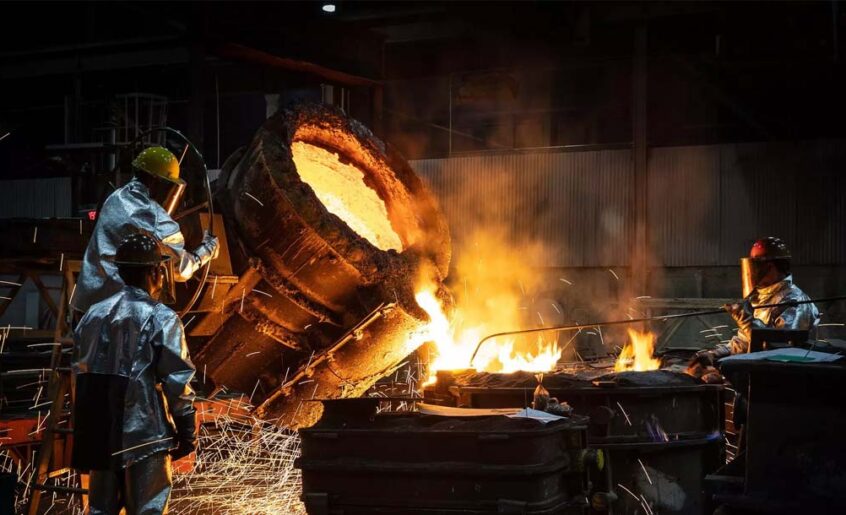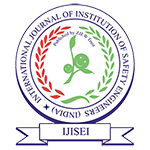IoT For Safe Handling Liquid Metals

Volume 4, Issue 2, April – June 21
IoT For Safe Handling Liquid Metals
1Praveen Sankarasubramanian
Student Member –IEEE, Research Scholar VISTAS Chennai
1Email id: praveengrb@gmail.com
2Dr. En Ganesh
Dean, School of Engineering, VISTAS Chennai
2Email id: enganesh50@gmail.com
Abstract
Liquid metals are widely used components in chemical industries and nuclear reactors. Handling of liquid metals are crucial. Corrosion, Pressure can deteriorate the structure that handles the liquid metals. Leakage of liquid metals can result ecological disaster. Early warning, Detection of accident and Action taken post the incident are the three important phases of monitoring. Continuous monitoring and timely detection reduces the impact caused by the leakage of liquid metal. At present, industries have sensors based detection. This paper proposes an enhanced version of existing system. Here, the continuous monitoring uses sensors, IoT and Artificial Intelligence based system.
Keyword: Liquid metals, IoT, CNN, OPEN CV, Computer Vision
1. Introduction
Lquid metals are hazardous in nature. For example, Liquid Sodium reacts immediately when exposed to air / water. They can explode, produce caustic fumes. Existing detection systems have sensors to detect and mitigate the hazards. Late detection and false alarms are common in traditional approach. Physical observations of chambers/structure, transportation systems might be tougher.

Fig. 1. Leakage of liquid sodium
For example, in the year 1995 at Monju Nuclear Power Plant a Thermowell inside the pipe carrying sodium coolant broke due to the intense vibration. The root cause of the incident was a defective weld point. Several kilograms of sodium leaked.
When it contacted with air, liquid sodium reacted with air and moisture. It produced enormous amount of heat and the room was filled with caustic fumes. This made the reactor to stop their functioning. In the year 2010 they resumed. But, this time the condition was even more threatening. It occurred through a series of failures
- 2010 In-Vessel Transfer Machine Failure
- 2012 Sodium heater failure, Malfunctioning of sodium detectors
- 2013 failure to assess thickness of degrading sodium coolant pipes, generator failure, data transfer failure.
- 2015-2016 deteriorated water quality in nuclear fuel rod pool.
2. Proposed System
Behavior of the data collected at a given place changes time to time. If we keep a camcorder that captures 30 FPS at an open place (like garden or any outdoor places). It captures 18,144,000 frames. The probability of occurrence of same event twice is negligible (will be the result of P (A) * P (B|A)). Hence integrating multiple input sources might give better result.
The proposed system has a fixed and moving sensing unit, Image Capturing System, Sensor Management Module, Structured and Unstructured Data Analysis Module.
A. Fixed Sensing Unit
This Fixed sensing unit consists of Sensors, Radars, and Transducers. Electromagnetic, light, infra-red, vapor, impedance, pressure, reflection, fiber optic, temperature, acoustic are some of the widely used sensors. Ground penetration radars, LIDARS and piezo electric transducers are the other possible components of sensing unit.
B. Moving Unit and Image Capturing Unit
CCTV units, Audio Capturing devices, cameras, drones, tiny robots are the components of this unit. They detect and send the sensed information to the API Gateway.
Rest of the unit is critical, in order to keep the system safer, I plan to make this as a Cloud Based SAAS solution. I have a future scope to make this idea as a “SAAS” application.
C. API Gateway
This system collects data from different input sources. This system is highly critical module. It should handle lakhs or millions of request at a time. It should be resilient and it should not go down by any chance. Hence, the architecture of this API Gateway is important. Multi cloud (Google App Engine, Azure, and AmazonWeb Services) would be a better option.
D. Sensor Management Module
This module is a sensor dictionary. It contains the sensors and its specifications. It helps the structured-data analysis module to detect the trigger threshold point.
E. Structured Data Analytics Module
Structured (Data from DB through feedback system) and Semi-Structured (JSON or other signals triggered from sensors) are analyzed. This module compares the current data, sensor operational specification and historical data to identify the behavior of the signal.
F. Processing module
Data received might have junks. Data collected from video camera can contain smoke or fire-like objects. Hence it is important to reduce the noise, clear the outliers. Preprocessing unit removes reduces the noise and improves the data quality.
Data cleansing, data segregation, classification, clustering are done in the Preprocessing Unit. Open CV, Classification algorithms, Neural Networks, Clustering Algorithms play a vital role in the processing unit.
This module is self-learning and it always tries to ensure the accuracy of the data.
3. Conclusion
This suggested paper suggested an approach provides an outline of sensors like acoustic sensors, visual monitoring, impedance sensors, fiber optic sensors, and infrared thermal camera are listed. Context-Based Data preprocessing block grouped the collected results based on a context. Adaptive analytics has been completed with the help of the final framework. This proposed approach looks efficient and reliable. It suggests a way to handle and mitigate the hazards created due to the Fluids and Liquid Metals. In addition, previous detection of leakages is achievable and detection of potential sources of harms monitored in a timely manner.
References
- Praveen Sankarasubramanian, “Real Tıme AI, Computer Vısıon Based Framework To Detect And Prevent Lıquıd Metal Fıre Hazards,” International Journal of Advanced Science and Technology. vol. 29, no. 8, pp. 3796-3806, July. 2020.
- Gracie, J.D. and Droher, J.J., “A Study of Sodium Fire,” NAA-SR-4383 (1960).
- Dunnings and Breckon, In Proc. International Conference on ImageProcessing IEEE, 2018
- X. Lang, P. Li, Z. Hu, H. Ren and Y. Li, “Leak Detection and Location of Pipelines Based on LMD and Least Squares Twin Support Vector Machine,” in IEEE Access, vol. 5, pp. 8659-8668, 2017.
Author Profile:

Praveen Sankarasubramanian, Praveen Sankarasubramanian D.ECE, M.Tech, PGDBA, AMIE(India), CEng(India), MICSES, SMISE(India) is a Research Scholar, Vels Institute of Science, Technology and Advanced Studies,(VISTAS), Chennai.
He as a tech-savvy software developer who has an IOSH certification. He got state first in 10th Tamil Language and He received a Gold Medalist with 600/600 mark in Diploma. He completed BE in Government College of Engineering, Tirunelveli and finished his M.Tech (Software Systems – Data Analytics) from Birla Institute of Technology and Science, Pilani, Rajasthan.

Dr. E. N. Ganesh Dean School of Engineering, Vels Institute of Science, Technology and Advanced Studies, (VISTAS), Chennai. He is a Professor in the field of Electronics for the past 20 years, Specialized in Nano electronics and Microelectronics. His research work in Quantum electronics adjudged the best thesis and received a Gold medal in Ph.D. He has finished M.Tech from IIT Madras in Microelectronics. He has 54 Conferences and Journal Publications. Mail id: enganesh50@gmail.com
